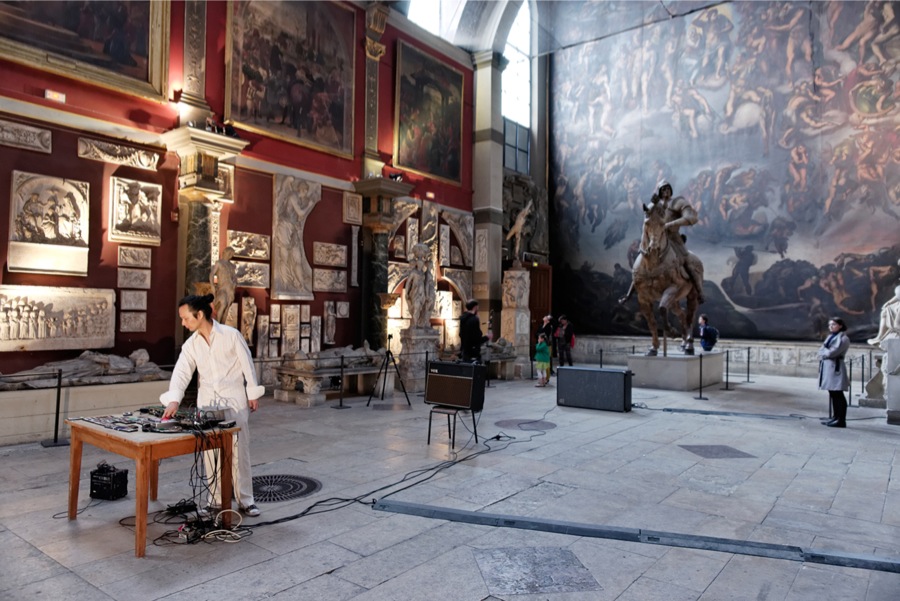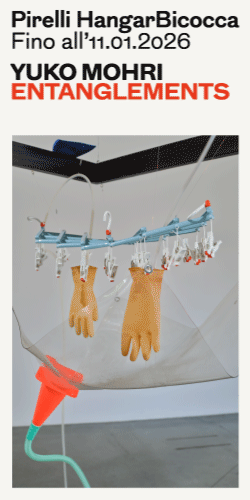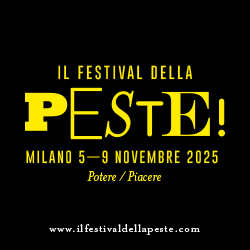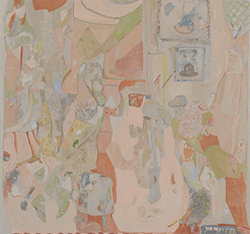
(Scroll down for the English version)
Aki Onda Cassette Spectacle #1, #2, #3
nomadic tape concert, prima italiana
Cassette Spectacle #1, #2, #3 è un programma di tre performance sonore eseguite da Aki Onda, che scomparirà e riapparirà come una presenza nomadica nei diversi angoli e spazi del museo durante le serate di Live Arts Week. Per un quarto di secolo Aki Onda ha sedimentato un imponente diario sonoro usando come mezzo di registrazione un Walkman a cassette, e creando un archivio che considera come una propria memoria, al di là del mero fatto sonoro. Questa mole di materiale su nastro, fornisce la base per le sue tape-performance, che utilizzano i Walkman come lettori e rielaborano in diretta suoni concreti. Dall’accumulazione documentaria di frammenti sonori di una vita privata emerge ogni volta, nei suoi rituali di assemblaggio, una sorta di rivelazione. Gli eventi registrati, spogliati dal loro significato originario, mettono a nudo il nucleo della memoria. “Mi piace praticare questo strano rituale in spazi precisi – edifici storici, angoli di strada, fabbriche abbandonate, o, come nel caso di MAMbo a Bologna, una vecchia fabbrica trasformata in museo. Il tentativo è quello di estrarre ed astrarre l’essenza di una memoria, sovrapponendo le mie registrazioni di field recordings a spazi già saturi di una memoria propria. Mentre mi confronto con l’acustica, l’architettura e la psiche di uno spazio accade qualcosa: come una risonanza. Il risultato è invisibile, ma si può intuire come queste memorie vive risveglino quelle addormentate”.
mercoledì 9 aprile > h 23.00 > MAMbo
giovedì 10 aprile > h 23.30 > MAMbo
sabato12 aprile > h 21.30 > MAMbo

Aki Onda – Cassette Spectacle #1, #2, #3
nomadic tape concert, italian premiére
Cassette Spectacle #1, #2, #3 are three sound performances by Aki Onda that will appear and disappear along the nights at Live Arts Week, in corners and central spaces of the museum, as nomadic live interventions. For a quarter century, Aki Onda has been using the cassette Walkman for making field recordings which he keeps as a sound diary. He considers these recordings to be personal memories, and not just sounds. He stages those performances by physically manipulating Walkmans by hand, re-collecting and re-constructing concrete sounds. What emerges from his sound memories is a sonic collage of ritualistic tape music. By documenting fragments of sound from his personal life, something is revealed in the accumulation. The meanings of the original events are stripped of their significance, exposing the essence of memory. “I like performing this strange ritual at a site-specific location – at a historic building, street conner, abandoned factory – or an old factory transformed to a museum in such as the MAMbo in Bologna. I am trying to both extract and abstract the essence of memory by juxtaposing my own field recordings, so to speak my personal memories, at a location that is saturated with its own memories. Something resonates and happens while I’m dealing with acoustics, architecture and psyche of the space. The result is invisible but one can feel live memories awaking sleeping memories.”
wednesday 9 april > 11 pm > MAMbo
thursday 10 april > 11.30 pm > MAMbo
saturday 12 april > 9.30 pm > MAMbo
ATP: How did your collaboration with Ken Jacobs started?
Aki Onda: Ken and I first performed together in Brussels for his Nervous Magic Lantern performance in 2007 when curator, Stoffel Debuysere, who was working at Argos at the time, suggested us to collaborate together. I was happy about Stoffel’s idea as I was following Ken’s work closely even before that. If my memory is correct, back in 90s, I got interested in his work through Stan Brackage’s book “Film at Wit’s End.” Then, I stumbled across Ken’s works like “Blonde Cobra” and “Tom, Tom, the Piper’s Son” at Anthology Film Archives after I started visiting New York.
ATP: How would you describe your sound intervention in the performance Nervous Magic Lantern?
Aki Onda: The visuals in Nervous Magic Lantern is a series of hallucinatory images created by a hand-made and hand-manipulated projection device that uses neither film nor video. Ken’s request for the music was to play “the sounds of daily life.” So I make a flow of sound footage that simply co-exists with his images, in the hope that they would inspire each other. What interested me was that the visuals are just abstract images, but somehow viewers see ghostlike illusions that appear out of the light patterns that come out at you as if in 3-D. I wanted to achieve a similar effect with the music too. I mostly play field recordings through a surround sound system to match with the depth of 3-D and wanted to create a sort of hunted soundscape that suggests hallucinations. Though different in form, I would like to sync our visions in that way.
This time, I composed the soundtrack by using field recordings Ken made over last several decades. Some years ago, when Ken had a screening of his seven hours seminal work “Star Spangled to Death” at Anthology Film Archives, Ken was giving away some of his tapes to visitors who accomplished to watched the entire film. I asked him if he has many cassettes and he answered “Yes, crazy amount of those!” Ken was kept recording any kind of sounds around him by a cassette recorder – documentation of his family events, conversation with friends (recorded secretly), ambient sounds, lectures, radio programs, or whatever. I just thought it would perfectly fit to the concept of the project – “the sounds of daily life.” It’s nice that we have a practice to share and same kind of taste on sounds.
ATP: Could you present me the project Cassette Spectacle #1, nomadic tape concert? How will it develop inside the festival?
Aki Onda: It’s a sort of self study project. I can see endless possibilities with site-specific performances “outside” conventional venues these days, and I’d love to explore more. Basically, I’m dealing with acoustics, architecture and psyche of the locations. Each location has a very different historical background, architectural design and acoustics, and each performance could be very different from the others.
This time, I’ll use three different spaces in MAMbo, and do a different performance for three days. I’ll check out the rooms, decide where to perform, and start thinking what to do. So I have no idea what would be like at this point. But, I hope their spaces are inspiring and those would tell me what to do.
When I developed my cassette practice over the last twenty five years, I was strongly inspired by “everyday object junk alchemy occultism” of New York avant-garde artist as Harry Smith, Jack Smith, Richard Foreman, Stuart Sherman, Peter Beard etc. and what I do with “Cassette Spectacle” is closely related to their practices, which is essentially intermedia, and something occurs between genres. I’ll use not just sounds, also some visual objects and lights, and some movements as well.
ATP: Could you tell me about your interest for analogic sound recordings? Are you continuing recording?
Aki Onda: Yes, these days, I’m making one cassettes everyday. It’s actually more than I used too, and getting more intense. Analogue sound recording, especially cassette sound is a perfect medium for me to create an alternative reality as it modifies recorded sounds in a very characteristic way. It’s no good for the reproduction purpose since the recorded sounds can be quite different from the originals. As an artist, I’m like a magic realist. My vision is tied to “subconscious” – the area in our minds that resides in the region of dreams. I want to bring out something that is fundamentally a part of us, something that lies deep inside ourselves. So, cassette is a tool for me to bring those out.











